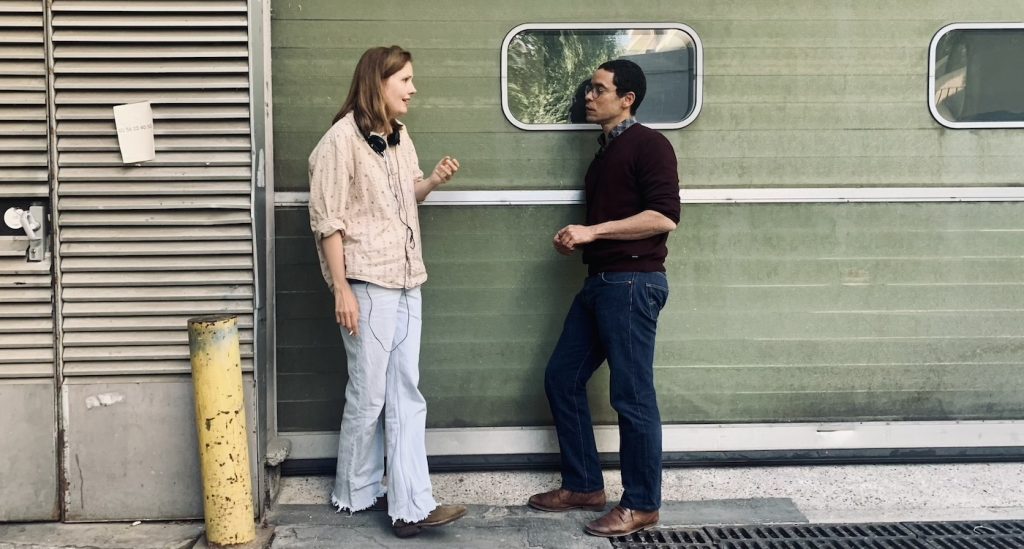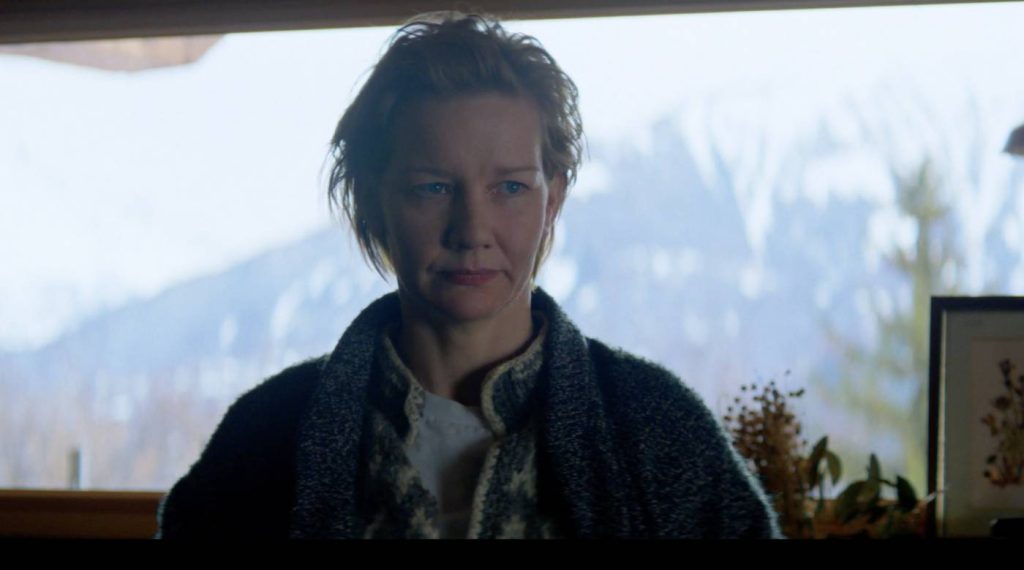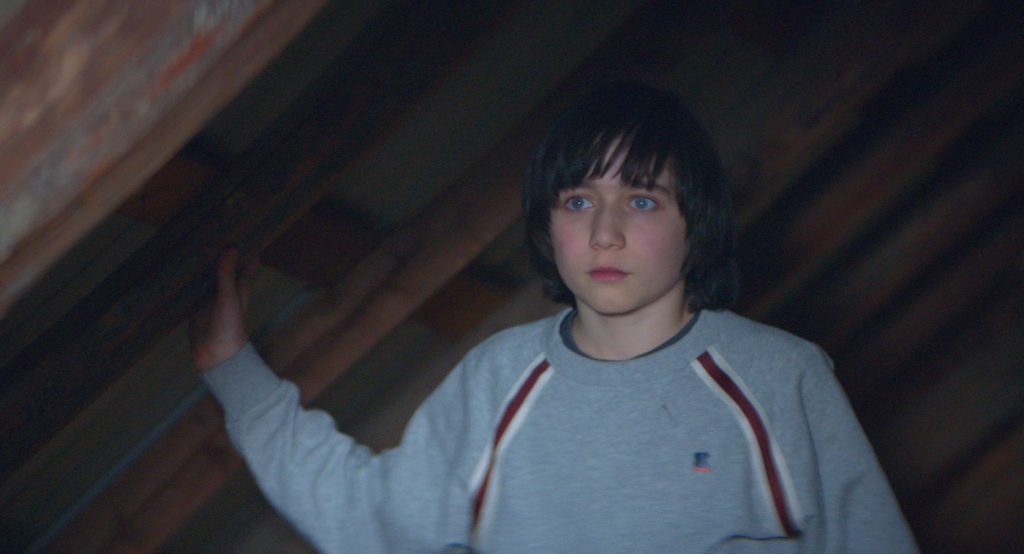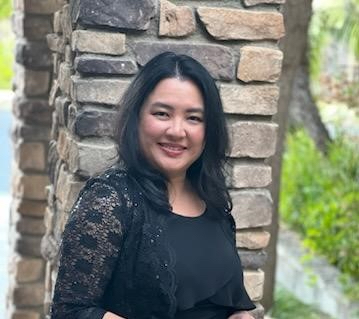Oscar-Nominated Editor Laurent Sénéchal’s High Wire Act in “Anatomy of a Fall”
After sweeping this awards season with trophies at the BAFTAs, France’s César Awards, Critics Choice, and the recent Spirit Awards, writer-director Justine Triet and co-writer Arthur Harari’s cerebral courtroom drama is headed for the home stretch, with five Academy Award nominations on the line. Anatomy of a Fall is a masterclass of filmmaking across the board, and that surely includes the surgical work done by editor Laurent Sénéchal (C’est ça l’amour, Sybil), who not only notched his first César Award but his first Oscar nomination, too.
The slow-burn thriller centers around successful novelist Sandra (played by Sandra Hüller, also nominated for an Oscar), who is accused of murdering her husband and struggling writer, Samuel (Samuel Theis) after he falls from the attic of their three-story chalet in the French Alps. As the trial drags on, the fissures in their marriage are painstakingly unraveled in the courtroom, culminating with an intense, long quarrel that happened to be recorded on his phone. All this while, the only person who could exonerate—or condemn—Sandra is the couple’s visually impaired 11-year-old son, Daniel (Milo Machado-Graner).
Speaking to The Credits from France on the eve of this weekend’s 96th Oscars, Sénéchal explains the film’s unique sonic palette—without the use of a music score—and how language plays a crucial and intricate role in the dramatic stakes.
Were you editing on set during most of the shoot? How long did it take?
It took 38 weeks. No, I wasn’t on set, but I watched the dailies and had calls with Justine maybe once a week. We decided to start editing only once filming was done. It’s faster that way because she has to be there when choices are done. The starting point is important because acting is the main thing for her, to find where the performances are vivid. She doesn’t focus on the meaning at the beginning—she needs to see what’s good. What is she feeling? Is there truth in the performance? Is it deep? Justine is really into acting. It’s like her door into directing.

Justine asked for your advice on the script before filming. What were some of your suggestions?
I asked her to pay more attention to transitions. For the fight, in the script, it was like a cut, which is realistic, but it was tricky for me because it’s nobody’s point of view. If she needed a flashback there, I asked her to shoot long shots of Sandra and the audience in the courtroom. She also had some close-ups on the TVs [in the courtroom], where the dialogue was translated for the jury. It was a way for me to enter and leave the flashback. After reading the script, I suggested being clearer about the couple’s money problems. This is a story about two writers with upper-class problems, and I wanted them to have problems that many people can relate to so the viewers can project themselves onto these characters.
This story is unique in that it makes language itself one of the points of contention between the couple. Did the bilingual nature of the story affect how you had to edit?
Not at all. It’s one more layer to manage. It was great because it was in the heart of their fight. They’re arguing over using English instead of French with their son; she says that’s their meeting point. This was an issue even in the courtroom. When it gets too hard for Sandra to be precise [in French], and when she has an emotional moment, she switches to English. In the script, it was hard to imagine that it was going to work, but in editing, it became another leverage we could use to shape this character.
The movie starts when a student interviews Sandra on the chalet’s first floor while Samuel keeps increasing the volume of a cover version of 50 Cent’s P.I.M.P. upstairs. What does this scene tell us about their marriage?
This scene launches everything. Samuel uses that music to show his anger, to not allow this flirtation downstairs and this lightness [between Sandra and the student]. He can’t hear what they’re talking about but could hear her laughter. As soon as he hears that, he increases the volume of the music. It was our way to create tension at the beginning of this thriller. Sandra is trying to be light, but she’s not; you can feel that. Then we hear Sandra asking the student, “What do you want to know? What is fiction versus reality?” These are themes [explored] in the trial as well. It’s called Anatomy of a Fall, but it could be called Anatomy of the Opening Scene.
The opening credits come after Samuel fell to his death, showing us snippets of their lives before everything falls apart. Talk about weaving those photographs to paint a vague picture of this family.
Using the photographs came really late in the editing process. At first, it was supposed to be a very long shot following the lawyer’s car driving to the chalet. It worked, but was a bit academic. Then Justine told me, maybe we can hear the piano here as the start of Daniel’s piano journey. I thought it was great, like twisting the shot on the car, because we were already in that intimate climate with the agitating piano music.
And it gives us a chance to have another look at Samuel.
But it was really important to see Samuel come to life at that point because we’re not going to see him again until the argument. So, the photos were a great way to show who these characters are. Most of them were done with VFX. We put the boy in some of the two actors’ pictures with VFX. In some pictures, it’s the face of Samuel but Arthur Harari’s body. The little boy playing the piano at the end of the credit was actually a girl; it was Justine’s daughter. The script was really great, and with editing, we tried to make it even better so that we could invite the audience with us and guide them through the story.
It was a deliberate choice to do without any musical score, and there isn’t much ambient sound in the film, except for when Daniel plays the piano. What was the reasoning behind this?
The challenge was to start like a thriller movie, but not like a normal thriller. It was a way to increase the tension and intensify the diegetic music in the movie, such as Daniel’s piano and P.I.M.P., the music the father plays at the beginning. It was even more realistic. With no score, you’re really listening to every sound. The movie is really about sound, and it starts when we hear Sandra asking, “What do you want to know?” It’s like she’s talking to the audience. “What do you want to know about me?” And this question is going to resonate for two and a half hours. In the first scene, the music is really loud; it’s like we’re avoiding the voices and paying attention to every sound. That’s what we wanted. If we had some score music, I think it would have been less original.

For the big fight between Sandra and Samuel—we hear the audio for a few beats first before going into the visual. Why was that?
I had the idea to stay long enough with audio for the viewer—once the audience starts to get complacent, it was possible to go into images and surprise the audience. Otherwise, I was pretty sure it would be hard for the audience if we cut right into the fight.
How much of that fight was originally scripted vs improvisation between Hüller and Theis?
Most of it was scripted; there was no improv. The way they played it was really rich, so I had great options. For Samuel, it was better to have him a bit weak, but with some shots where we can feel that he is surprised by the violence of Sandra’s words. We had to balance it because Sandra was really powerful, and we wanted him to not to be destroyed too early in the scene. It’s like a boxing scene.
How did you sustain the suspense during that fight without revealing whether Sandra played any part in Samuel’s death?
At first, we thought we would need intense and calm moments, but it didn’t work out like that. It was quite linear. We had two or three moments of calm when they were drinking around the kitchen table, and she said, “I love you.” With Sandra being that harsh and violent with him with words, we imagined it was going to be a slight move in this balance. He was vulnerable here; he could have committed suicide, maybe. But she’s so hard with him that, maybe not directly, but she’s guilty in some way. In the editing process, we were looking for a more balanced ending for that scene. We could not have a weak scene here—it was better to have a vulnerable Samuel than to have a weak scene here because the whole movie would fall [apart].
What were some of your favorite scenes to work on?
I’m really proud of the opening scene. It was a hard sequence to shape, so I’m happy to have done that. The moment that was really moving for me is when Daniel plays the piano before he testifies a second time. We can see that he’s made up his mind. He’s playing the Chopin on the piano with one hand, it’s the same piece that he was playing with Sandra previously. When he starts playing with both hands, we see him upstairs, where his father was before he fell. That scene was simple and quiet. Without words, you’re really captivated by him, and he brings us into his mind. You don’t know exactly what he’s going to do [at tomorrow’s testimony], so there’s suspense. It’s very emotional because he’s making up his mind and determined. You’re physically and emotionally with him. It’s great when you can feel that as an audience. At the end, when Sandra returns to him at the chalet for the first time after the trial, they don’t talk very much, but you understand how complex and really emotional it is.

How challenging was it to cut the long courtroom sequences?
The very long scene after we see Sandra and Samuel’s fight, where the prosecutor and the lawyers go back and forth for about 20 minutes. At one point, they discuss literature, and the prosecutor reads excerpts from one of Sandra’s novels. That’s a great moment because it goes further than the affair. It’s talking about an issue of our time, how what you may have written years ago can be used against you. It’s very interesting. It’s artistic, playing with reality, and really clever. So, in this way, I think the movie is bigger than itself.
Anatomy of a Fall is nominated for five Academy Awards at this Sunday’s 96th Oscars.
For more interviews with Oscar nominees, check these out:
Double Oscar Nominee Richard King Unveils the Aural Secrets of “Oppenheimer” and “Maestro”
Featured image: A still from “Anatomy Of A Fall.” Courtesy Neon.



